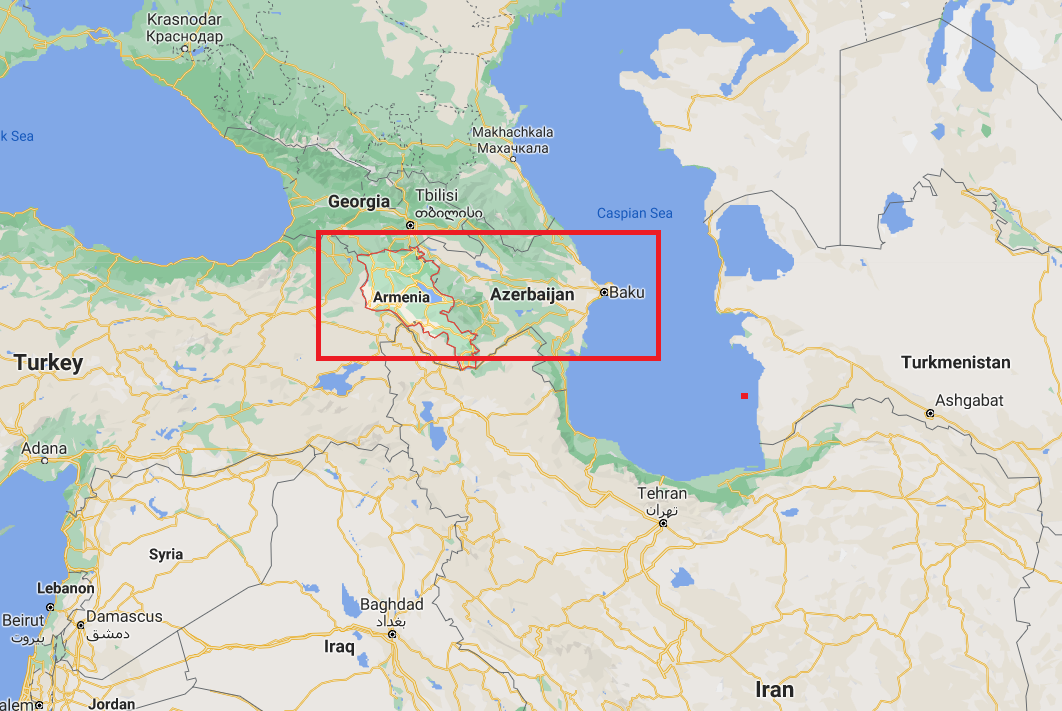Long-simmering tensions between Armenia and Azerbaijan erupted into significant conflict this weekend.
At contention is the breakaway Azerbaijani province of Nagorno-Karabakh. While the province is recognized as Azerbaijani territory, it is dominated by ethnic Armenians who seek consolidation under Armenia’s sovereign orbit. As the regional expert Thomas de Waal recently explained, “It is more than a territorial dispute. It is also a major clash over history and identity between two nations which have both lost grievously at the hands of the other, with 20,000 dead and mass displacement of more than one million people. Nowadays it endures as a fully-fledged conflict between two states that have shared a Soviet past but are still prisoners of their enmity with one another.”
So, what’s happening now?
Well, it is unclear who fired the first shots, but Armenia and Azerbaijan are now engaged in artillery, armor, and air combat. As the analyst Rob Lee observed, “Both sides have longer-range aircraft and artillery/[multiple launcher rocket] systems that can strike each other’s capitals, a capability that they effectively lacked before 2016. During the fighting in July, both sides chose to not use these systems, but that seems to have changed.” The referenced skirmish in July led to a number of civilian deaths but was quickly contained.
The present crisis is far more serious.
Motivated both by the desire to save face and to secure nationalist prestige, each nation seems determined not to make the first concession. Evincing the nationalist undertones, Azerbaijan is publishing a steady stream of strike videos online. Its intent: to show that it will triumph over its western neighbor. Turkey is also inflaming the situation. Although located south of Russia’s Dagestan province, Azerbaijan has long been a close Turkish partner. In turn, as shown on the map below, Turkey’s eastern border with Armenia gives it the means to exert pressure on its long hated adversary.
This historic animus matters greatly. Turkey is infuriated by Armenia’s legitimate claim that the Ottoman Empire conducted a genocide against its people during the 1914-1923 post-First World War period. Such history does not fit easily with President Recep Tayyip Erdogan’s nationalist identity politics, which aims to present Turkey as an infallible moral force in the region. There are credible reports of armed Turkish drones operating against Armenian forces, and Erdogan on Sunday warned that his nation “will continue to stand by its brothers in Azerbaijan as it has always done.” Considering Erdogan’s growing penchant for military escalation from Syria to Libya to the Mediterranean Sea, it’s likely that he will seek to secure an outcome that is wholly to Azerbaijan’s favor and Armenia’s detriment.
What will happen next?
NATO has called for calm and a restoration of peace, and Russian President Vladimir Putin is also inclined toward that outcome. While the Kremlin has close links to both Azerbaijan and Armenia, it retains a formal security relationship only with the latter. But Putin doesn’t appear to want escalation, which carries the risk of destabilizing his southern flank. Likely echoing Putin’s attitude, his Chechen strongman Ramzan Kadyrov commented “that the entire world community, the U.N., all neighboring states, the clergy immediately join this process and return peace to the Caucasus!”
The risk, then, is that Azerbaijan and Turkey will sense that they have the initiative and can formalize a new state of affairs on the ground via continued military action. International pressure will be critical if peace is to be restored.


